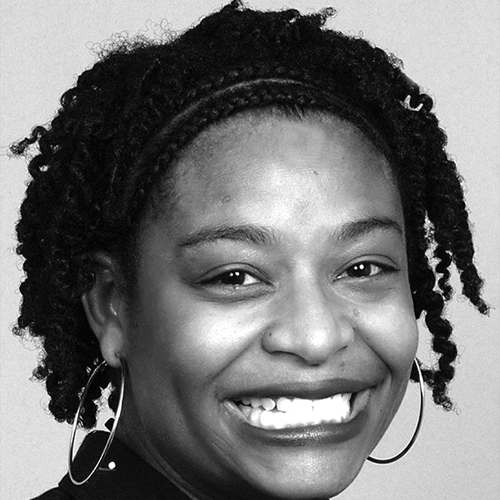Artist, designer, and educator Kelly Walters has spent the past decade teaching, writing, and publishing, all focused on race and representation in design.

Kelly Walters
Artist, Designer, Educator and Author, Black, Brown + Latinx Design Educators: Conversations on Design and Race
“My practice has always been about investigating Blackness, Black representation, and Black identity in design,” Walters says. “Sometimes this takes shape when I make design responses to things I see in culture, society, or mainstream media. It also includes looking inward and being really reflective of my own journey or the journeys of other folks of color as well.”
Conversations on design and race
During the pandemic, she published a book, “Black, Brown + Latinx Design Educators: Conversations on Design and Race,” that highlights the varied experiences of Black, Brown, and Latinx design educators who currently teach and work in graphic design.
The idea for the book started out at as preparation for a panel she coordinated for the College Art Association Conference in February 2020. She connected with and interviewed Black, Brown, and Latinx design educators from across the United States and Canada. Initially, she thought the work would be a pamphlet, but there was so much to include, it became a book, which she initially self-published and was later published by Princeton Architectural Press in March 2021.
The book showcases twelve deeply personal interviews with graphic design educators of color who teach at colleges and universities, including perspectives of a cross-section of ethnic and multiracial backgrounds such as African American, Brazilian, Dominican, Indian, Jamaican, Mexican, Pakistani, and Puerto Rican.
It explores the distinct narratives of Black, Brown, and Latinx design educators, including their childhood experiences, undergraduate and graduate studies, and their career paths in academia and design practice.
“While we may hold similarities, for the most part our experiences are very different from one other. None of us have the exact same background ethnically, or even regionally based on where we’ve grown up,” says Walters. “I knew going into the project that we were a group of people with different sets of varied and disparate experiences.”
She says that’s important because in diversity and inclusivity conversations, experiences are often lumped together. Instead, this book teases apart the nuance of what it means to be a design educator of color.
“Among the few of us who identify as Black in this book, there were aspects where we were very connected but there were also things that I didn’t experience.”
For example, Walters grew up in New England and attended UCONN, while some Black designers featured in the book grew up in the Midwest or South and attended an HBCU. Where many of them align is that they’re often the only person of color in their institution.
The different and shared experiences explored in the book add richness to what it means to be a person of color in design, and Walters says it’s an entry point to address the complexities of race in design and for educators to look at the challenges of teaching graphic design at different types of public and private institutions.
Finding community
Walters, who earned her MFA in graphic design from the Rhode Island School of Design, is an assistant professor of communication design and the associate director of the BFA Communication Design Program at Parsons School of Design in New York.
Her multidisciplinary design studio and art practice is called Bright Polka Dot. Her work has been recognized by Graphis, Connecticut Art Directors Club, Communication Arts, AIGA Eye on Design, and others.
Walters plans to continue exploring oral histories and is finishing other book projects. She is currently a co-editor of the book anthology “The Black Experience in Design,” which features over 50 different Black design contributors and is due out in February 2022.
She advises design students and professionals “to find your tribe,” which is ultimately what Walters did when she interviewed the design educators for her books.
“The biggest piece of advice I would give to anyone is that your community doesn’t necessarily have to be in your specific organization,” she says. “It could be anywhere around the world, in another design studio, in Slack channels, or someone down the street.”

